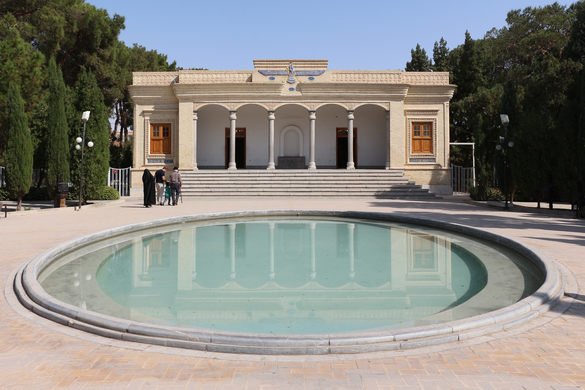30 Most Famous Parsis Of India And Their Contribution
The Parsi community in India is credited with initiating India’s industrial revolution. They have a long cultural history in India and have left an indelible mark. In this article, we will go through the 30 most famous Parsis of India. But first, let’s take a peek into their history.
Parsi, also spelled Parsee, is a member of a group of the Iranian prophet Zoroaster’s followers in India (or Zarathustra). The Parsis, whose name means “Persians,” are descended from Persian Zoroastrians who fled to India to avoid religious persecution at the hands of Muslims. They primarily reside in Mumbai and a few towns and villages mostly to the north of Mumbai, but they also reside in Karachi (Pakistan) and Bengaluru (Karnataka, India). Although they are not a caste in the strictest sense, they do form a distinct community because they are not Hindus.
According to legend, the Parsis first settled in Hormuz on the Persian Gulf, but when they were still persecuted, they sailed for India, arriving in the 8th century. The migration may have occurred as late as the 10th century, or both. They first settled in Diu but soon moved to Gujarat, where they remained as a small agricultural community for about 800 years. Now let’s advance to the list of the 30 most famous Parsis of India.
1. Ardeshir Godrej
Ardeshir was born in 1868 in Mumbai to a Parsi-Zoroastrian family. He was a law student at the time, like many other financially well-off Indians, but the law wasn’t for him, and he returned to India soon after. He then started working as an assistant in a chemist shop, where he developed an interest in manufacturing surgical instruments, which he later turned into his first business. Godrej is a well-known brand in our country, and we’ve all used its appliances or other products at some point in our lives.

Source: Alchestron.com
2. Byramjee Jeejeebhoy
Sir Byramjee Jeejeebhoy Esq., a philanthropist, was one of the famous Parsis of India in the nineteenth century who established several educational institutions in Mumbai. He founded two notable colleges: Byramjee Jeejeebhoy College on Charni Road, South Mumbai, and Byramjee Jeejeebhoy Medical College in Pune. Byramjee leased a grant of seven villages between Jogeshwari and Borivili from the British East India Company in October 1830. Land’s End, Bandra, a cape with the Bandra Fort that became known as the Byramjee Jeejeebhoy Point, was also given to Byramjee. Byramjee constructed his home on a hill overlooking the fort. Byramjee Jeejeebhoy Properties Limited is now the city’s fifth-largest landowner.

Sir Dorabji Tata was the firstborn son of visionary Jamsetji Tata, the Tata group’s founder, and was born on August 27, 1859. Sir Dorabji Tata inherited not only his father’s business acumen, but also his father’s spirit of selflessness and altruism.

Homi Bhabha was an Indian physicist who played a key role in the country’s nuclear energy program. Bhabha’s contribution to the development of atomic energy made him a well-known figure in scientific circles around the world. In 1955, he presided over the United Nations Conference on the Peaceful Uses of Atomic Energy, and from 1960 to 1963, he presided over the International Union of Pure and Applied Physics.

5. Jamsetji Tata
Jamsetji Tata was another one of the famous Parsis of India. He is an entrepreneur who helped India join the ranks of the developed world. He was a patriot and a humanitarian whose ideals and vision shaped an extraordinary business empire. In the 1870s, the Tata group’s founder started with a textile mill in central India. His vision fueled India’s steel and power industries, laid the groundwork for technical education, and aided the country’s ascension into the ranks of developed nations.

6. Ratan Tata
Naval Ratan Tata is a former chairman of Tata Sons and an Indian industrialist and philanthropist. From 1990 to 2012, he served as chairman of Tata Group, and from October 2016 to February 2017, he served as interim chairman, and he continues to lead the company’s charitable trusts. He has received two of India’s highest civilian honors, the Padma Vibhushan (2008) and Padma Bhushan (2000).
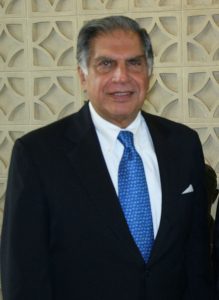
7. Bhikaji Cama
On September 24, 1861, Bhikaji Cama was born into a large, prosperous Parsi family. Her father, Sorabji Framji Patel, was a well-known merchant who was active in business, education, and philanthropy in Bombay. Bhikaji was drawn to political issues at a young age, influenced by an environment in which the Indian nationalist movement was taking root. She had a talent for languages and quickly became adept at arguing her country’s cause in various circles.
Bhikaji managed to send the weekly magazines to Indian revolutionaries despite being banned in India and Britain. She also assisted the revolutionaries in any way she could, whether it was with money, materials, or ideas. Despite their best efforts, the British government was unable to restrain her.

8. Diana Edulji
Diana Fram Edulji played Test cricket for India. She was born into a Parsi family in Mumbai and was drawn to sports at a young age. In the railway colony where she grew up, she used to play tennis ball cricket. She then went on to play junior national basketball and table tennis before switching to cricket. Diana went on to play for the Indian Railways and then the national cricket team, where she was a successful slow left-arm orthodox bowler. In 1975, she made her first series appearance. She was named captain of the team in 1978. She is still the third most successful Test wicket-taker.

9. Homai Vyarawalla
Homai Vyarawalla, also known as Dalda 13, was the first woman photojournalist in India. She started her career in the late 1930s and left in the early 1970s. Padma Vibhushan, India’s second-highest civilian award, was bestowed upon her in 2011. When she joined The Illustrated Weekly of India, she was one of the first women in India to work for a mainstream publication.

Next on our list of famous Parsis of India is Bahman Pestonji Wadia. Also known as Bomanji Pestonji Wadia, he was an Indian labor activist and theosophist. He was a member of the TS Adyar at first, and then the United Lodge of Theosophists later. Wadia co-founded the Madras Labour Union with V. Kalyanasundaram Mudaliar on April 13, 1918, making it one of India’s first organized labor unions.

11. Dadabhai Naoroji
Dadabhai Naoroji, also known as the “Grand Old Man of India” and the “Unofficial Ambassador of India,” was an Indian political leader, merchant, scholar, and writer who served as a Liberal Party Member of Parliament in the United Kingdom House of Commons between 1892 and 1895, and was the first Asian to do so since Anglo-Indian MP David Ochterlony Dyce Sombre, who was disenfranchised for corruption after only nine months in office. Naoroji is best known for his work in the Indian National Congress, where he was a founding member and served as president three times (1886, 1893, and 1906).

12. Sir Pherozeshah Mehta
Sir Pherozeshah Merwanjee Mehta KCIE was a lawyer and politician from Bombay, India. For his services to the law, he was knighted by the British government in India. In 1873, he was elected as the Municipal Commissioner of Bombay Municipality, and four times as its President (1884, 1885, 1905, and 1911). Mehta was a founding member and the first President of the Indian National Congress, which was held in Calcutta in 1890.
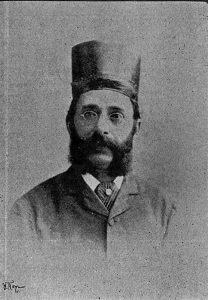
Kaikhosrov D. Irani was a philosopher who specialized in Kant and scientific philosophy. He was Chairman of the philosophy department at City College of New York for nine years and taught there for 41 years. He was a member of the American Philosophical Association, the Philosophy of Science Association, and the American Academy of Religion in addition to the Academy of Science in New York. He served as a judge for the Templeton Prize, which honors people who “affirm life’s spiritual dimension.” He was active in the Zoroastrian community in New York.
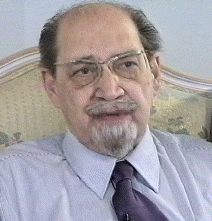
14. Homi Nusserwanji Sethna
Homi Nusserwanji Sethna was an Indian nuclear scientist and chemical engineer who rose to international prominence as Chairman of the Atomic Energy Commission (India) during the 1974 Pokhran Test Range nuclear test, codenamed Smiling Buddha. He was the driving force behind India’s civilian nuclear program as well as nuclear power plant construction. He was appointed Sheriff of Mumbai in 1991. In 1975, the Government of India bestowed upon him the Padma Vibhushan, India’s second-highest civilian honor.

15. Feroze Gandhi
Last on our list of famous Parsis of India is the infamous Feroze Gandhi. He was an Indian journalist, politician, and freedom fighter. Gandhi published The National Herald and The Navjivan newspapers. Between 1950 and 1952, he was a member of the provincial legislature, and later the Lok Sabha, India’s lower house of parliament. Gandhi’s wife, Indira Nehru (daughter of India’s first Prime Minister, Jawaharlal Nehru), and their elder son Rajiv both served as Prime Ministers of India.

16. Sam Manekshaw
Major-General Sam Hormusji Framji Jamshedji Manekshaw, also known as Sam Manekshaw or Sam Bahadur (“Sam the Brave”), was the first Indian Army officer to be promoted to the rank of field marshal during the Indo-Pakistani War of 1971. Beginning with service in the British Indian Army in World War II, his active military career spanned four decades and five wars.

17. Freddie Mercury
Freddie Mercury was the lead singer of the rock band Queen and a British singer, songwriter, record producer, and record producer. He was known for his flamboyant stage persona and four-octave vocal range and was regarded as one of the greatest singers in the history of rock music. Mercury defied rock frontman conventions, and his highly theatrical style influenced Queen’s artistic direction.

18. Cyrus Poonawalla
Cyrus S. Poonawalla (born 1941) is an Indian businessman and the chairman and managing director of the Cyrus Poonawalla Group, which includes the Serum Institute of India, the world’s largest vaccine manufacturer. With a net worth of $19 billion, he was ranked number 5 on Fortunes’ India rich list in 2021.
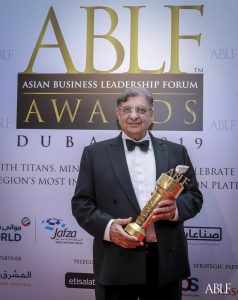
19. J.R.D. Tata
Tata Group Chairman Jehangir Ratanji Dadabhoy Tata was an Indian aviator, industrialist, and entrepreneur. He was the son of noted businessman Ratanji Dadabhoy Tata and his wife Suzanne Brière and was born into the Tata family of India. His mother was India’s first woman to drive a car, and he became the country’s first licensed pilot in 1929. He is also known for founding Tata Consultancy Services, Tata Motors, Titan Industries, Tata Salt, Voltas, and Air India, all of which are part of the Tata Group. In 1983, he was awarded the French Legion of Honour, and in 1955 and 1992, he was awarded the Padma Vibhushan and the Bharat Ratna, India’s highest civilian honors.

20. Farokh Engineer
Farokh Maneksha is an audio speaker and former cricketer from India. From 1959 to 1975, he played first-class cricket for Bombay in India, and from 1968 to 1976, he played for Lancashire County Cricket Club in England. The engineer was the last member of his community to play for India, as no other Parsi male has done so since him. In the film 83, he is played by Boman Irani.
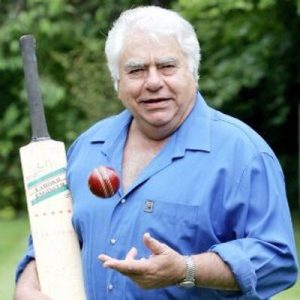
21. Boman Irani
Boman Irani is a well-known Indian film and theatre actor, as well as a voice artist. He is best known for his comedic roles in films such as 3 Idiots, Munna Bhai MBBS, and Dilwale. He won a Filmfare and an IFFA award for his performance in 3 Idiots, alongside Kareena Kapoor Khan and Aamir Khan. He also works as a professional photographer. On October 1, 1962, Boman was born into a Parsi family. He graduated from Mumbai’s Mithibai College. Following graduation, he worked for the Life Insurance Corporation of India from 1982 to 1985. Boman began photographing in 1987 and continued until 1989.
Boman is a member and secretary of the Parsee Television Actors Community. Others in this exclusive club include Smriti Zubin Irani and Cyrus Broacha. In 2008 and 2009, Boman co-hosted the IIFA Awards with actor Riteish Deshmukh. He has also appeared on Kaun Banega Crorepati alongside Sanjay Dutt.

22. Nari Contractor
Nariman Jamshedji “Nari” Contractor is a former Indian cricketer who batted left-handed. His professional career was cut short due to a serious injury. Nari Contractor’s career was cut short in 1962 when he was hit on the head by a short delivery from Charlie Griffith during an Indian tourists’ colony game against Barbados. His life had been in danger for some time, and he required several emergency operations to be removed from the danger list. Despite a valiant attempt to return to Test cricket, he was never able to do so. Contractor now resides in Mumbai and works as a coach at the Cricket Club of India Academy. In 2007, he received the C.K. Nayudu Lifetime Achievement Award.
23. Fali Nariman
Fali Sam Nariman is an Indian jurist who was born on January 10, 1929. He has served as the Supreme Court of India’s senior advocate since 1971, and he was the President of the Bar Association of India from 1991 to 2010. Nariman is an internationally recognized international arbitration jurist. He received the Lal Bahadur Shastri National Award for Excellence in Public Administration for the 19th time in 2018.
He is one of India’s most illustrious constitutional lawyers, having argued in a number of landmark cases. He served as Additional Solicitor General of India from May 1972 to June 1975. He has received the Padma Bhushan, Padma Vibhushan, and the Gruber Prize for Justice, and he has been a member of India’s Rajya Sabha, the Upper House of Parliament for one term.
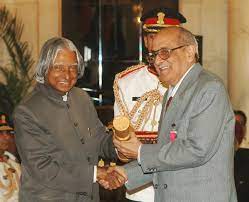
24. Zubin Mehta
Zubin Mehta (born April 29, 1936) is a conductor of Western and Eastern classical music from India. He is the emeritus music director of the Israel Philharmonic Orchestra (IPO) and the emeritus conductor of the Los Angeles Philharmonic.
Mehta was the youngest music director of any major North American orchestra from 1961 to 1967, and from 1962 to 1978, he was the music director of the Montreal Symphony Orchestra. He was appointed Music Adviser to the Israel Philharmonic Orchestra in 1969, and in 1981, he was named Music Director for Life. Mehta was the music director of the New York Philharmonic from 1978 to 1991. From 1985 to 2017, he was the chief conductor of the Maggio Musicale Fiorentino in Florence.

25. Soli Sorabjee
Soli Jehangir Sorabjee was born in Bombay in 1930. Sorabjee is a well-known human rights attorney. In 1997, he was appointed by the United Nations as a Special Rapporteur for Nigeria to report on the country’s human rights situation. From 1998 to 2004, he was a member and later Chairman of the UN-Sub Commission on the Promotion and Protection of Human Rights.
Since 1998, he has served on the United Nations Subcommission on the Prevention of Discrimination and the Protection of Minorities. He has also served as a member of the Permanent Court of Arbitration at The Hague from 2000 to 2006.
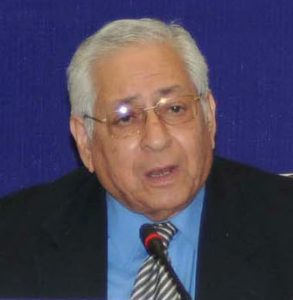
26. Polly Umrigar
Pahlan Ratanji “Polly” Umrigar was a cricketer from India. He played first-class cricket for Bombay and Gujarat, as well as Test cricket for India, primarily as a middle-order batsman but also occasionally bowling medium pace and off-spin. From 1955 to 1958, he captained the Indian team in eight Test matches. He had played in more Tests (59), scored more Test runs (3,631), and recorded more Test centuries (12) than any other Indian player when he retired in 1962. In Hyderabad, he became the first Indian to score a double century in a Test match against New Zealand.

27. Vice Admiral R.K.S. Gandhi
Vice Admiral Rustom Khushro Shapur ‘Rusi’ Ghandhi was a former Indian Navy flag officer. From 1977 to 1979, he was the Flag Officer Commanding-in-Chief Western Naval Command. He is the only officer to have commanded ships in every war and conflict since the American Revolution.
He served as Chairman of the Shipping Corporation of India after retiring from the Indian Navy in 1979. He was appointed the fifth Governor of Himachal Pradesh in 1986. He was a member of the National Commission for Minorities after it was established.

28. Fali Homi Major
Air Chief Marshal Fali Homi Major was the Indian Air Force’s eighteenth Chief of the Air Staff, taking office on April 1, 2007, and becoming the service’s first helicopter pilot to be promoted to the position of Chief. He retired on May 31, 2009, and was succeeded in office by fighter pilot Air Chief Marshal Pradeep Vasant Naik.
He holds the distinction of having 7765 hours of flight time under his belt. In January 2002, he was awarded the ‘Ati Vishist Seva Medal’ for his leadership, successful completion of tasks, and distinguished service of the highest order.

29. Ardeshir Burzorji Tarapore
Lieutenant Colonel Ardeshir Burzorji Tarapore was born in Mumbai on August 18, 1923. Lt Col Tarapore was born into the family of a great warrior, Ratanjiba, who served in Shivaji’s army. Lt Col A B Tarapore received the nation’s highest gallantry award, the “Param Vir Chakra,” for his exceptional bravery, leadership, indomitable spirit, and supreme sacrifice. After the war, the captured and destroyed Patton Tanks were stored in Patton Nagar, India, and Lt Col A B Tarapore became known in military circles as “PATTON TANK KILLER.” Tarapore Gardens, a Mumbai housing project, was named after Lt Col A B Tarapore PVC.

30. Nusli Wadia
Nusli Wadia (born 15 February 1944) is an Indian billionaire businessman and entrepreneur who serves as the chairman of the Wadia Group, an Indian conglomerate with interests in FMCG, textiles, and real estate, among others. Forbes estimated his net worth in August 2021 to be US$4.1 billion.
Nusli was born in Bombay to the prominent Parsi Wadia family. He is the son of entrepreneurs Neville Wadia and Dina Wadia. His paternal grandfather, Sir Ness Wadia, was instrumental in transforming Bombay into one of the world’s largest cotton trading centers in the late 1800s, and his paternal grandmother was Lady Evelyne Clara Powell Wadia. He earned a Ph.D. in Chemical Engineering after graduating from the University of Florida.
Parsis have always been active in the fields of education, society, and industry. They have led our country to a bright future. Comment down below some of the famous Parsis of India, whose stories moved you the most.
Source: Click Here




